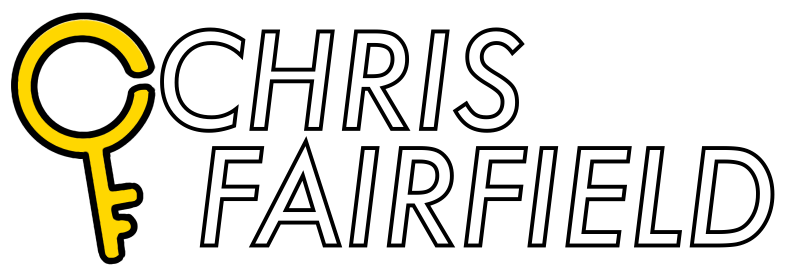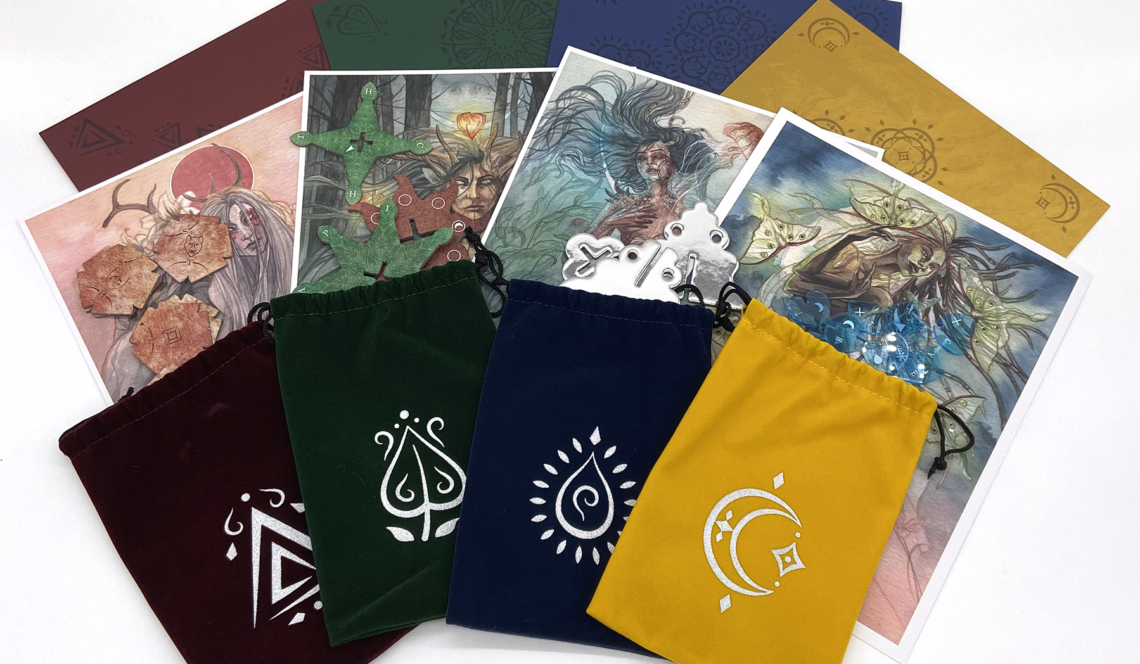
Adrift
Review
Game Description
“Adrift is a puzzletale told through poems, illustrations, and physical artifacts, in which players will take on the role of a dream expert interpreting the significance of subconscious messages communicated by ethereal beings. Solve your way through a variety of puzzles to discover the mysterious world of Adrift.”
Personal Experience
After playing through The Emerald Flame, one of my favorite at home puzzle experiences, I was pretty stoked to see what PostCurious games had in store for their next entry. So when Adrift was announced, it was an instant pre-order for me.
It arrived by the time I had finished The Light in the Mist (another very excellent PostCurious release); so—still hyped from that experience—I played through it immediately. I may have done my self a disservice by not waiting a bit longer between experiences, because this one couldn’t quite live up to the lofty expectations set by the previous two entries. There were many good moments, but some really frustrating color-themed puzzles and a relatively thin narrative kept it from becoming a favorite. Overall, it took me about three hours to play through the experience.
Narrative
The narrative portions of the experience are primarily limited to the story’s framing device, making for a leaner puzzletale than previous PostCurious games. You play as a dream interpreter and are tasked with investigating a series of abstract dreams and poems. This device is well-employed to show off the gorgeous artwork featured throughout the game. Artist Amelia Leonards‘s watercolors are vivid and otherworldly, perfectly encapsulating the vibe of a prophetic dream. The art is so good in this game that you may want to frame and hang it, which it seems like the creator anticipated considering that the four primary art pieces are printed on thick, framable archival paper.
However, unlike Emerald Flame and Light in the Mist, which wove their narrative masterfully throughout the experience, Adrift’s story and its resolution felt a bit divorced from the striking imagery. This isn’t to say that the narrative was bad or made for a bad experience—it was fun and definitely more narrative-minded than many I’ve played—I just needed to reframe my expectations to focus more on the puzzle and less on the tale.
Puzzle Play
The puzzle play in Adrift is pretty straightforward. The experience is divided into four, elemental-themed sections, each featuring a sequence of puzzles that ends with the introduction of a physical prop. You can tackle the sections in any order you choose1The game does provide a starting point, if you’re new to games or feeling indecisive. and each section, with the aid of the prop, solves to a single phrase. Combine the four phrases and to find the game’s solution.
The puzzles in each section where numbered in the order required to solve them, so it was always very obvious what puzzle you needed to be solving at that moment and what the next puzzle would be. Despite each section have effectively the same components: three poems, a watercolor painting, and a physical prop, they still managed to feel distinctive to the element they were associated with.
The big complaint I had with the puzzles —and the game as a whole—is a familiar one to anyone who reads this blog regularly: color accessibility. PostCurious has included some color-themed puzzles in all of their games I’ve played so far. However, they were a relatively small part of the previous two experiences. Color-themed puzzles make up a much larger portion of this game and they were especially frustrating this time around. So much so that I’m going to do something I don’t usually do and call out a puzzle and how I would fix it. If you don’t want minor spoilers, I’d recommend stopping here or skipping to the recommendation.
This is the first puzzle of the air elemental section:
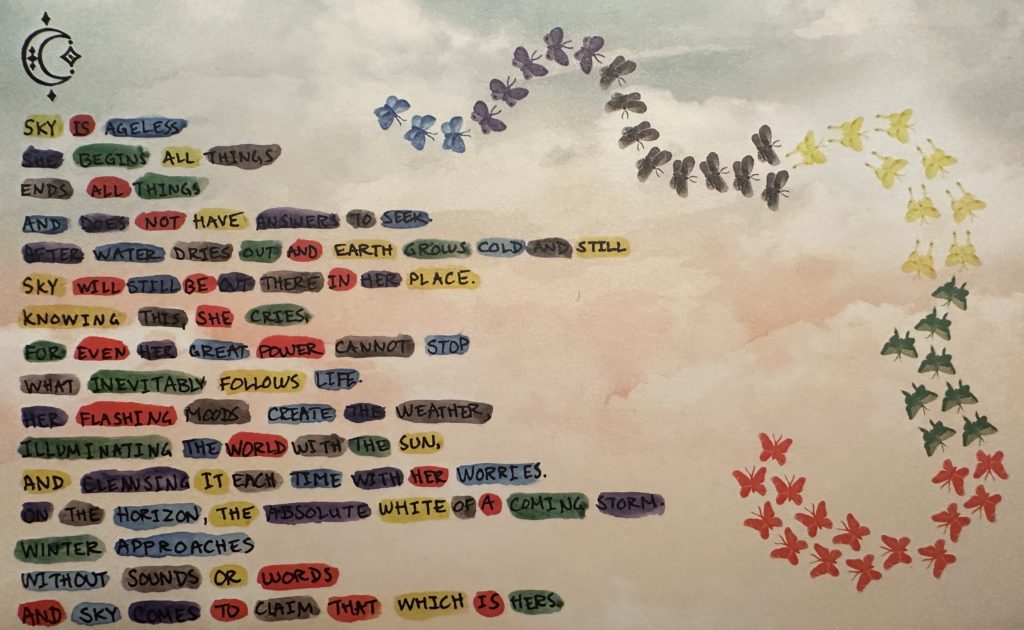
And this is roughly what it looks to me:
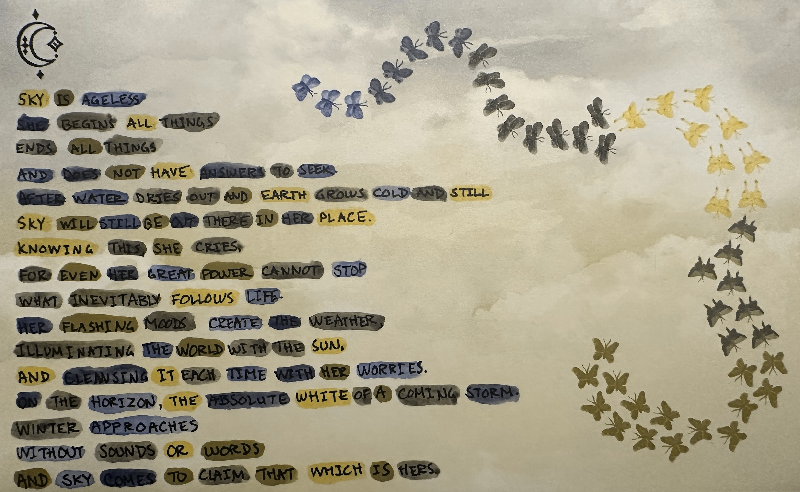
The greens and grays are indistinguishable, the purples oddly also seem to blend in with them too. For me, it was overwhelming in my inability to parse what words were grouped together and what color of butterfly they matched with. I tried using some computer tools to figure out the colors, before finally giving up and waiting until I had a friend over to point out which ones went where.
If I were tasked with fixing this design, I wouldn’t need to do much. Each butterfly has a unique wing shape, and I would incorporate them into the design of the word highlighting, taking the edge of the wings and adding them to one end or the other of the highlight. This is a quick Photoshop of what that might look like:

This still fits in with the theme and vibe of the puzzle, it just adds a secondary method for people who can’t discern color to be able to enjoy the experience as well. I also want to emphasize that, I love, love, love the work that PostCurious is doing overall. Their games are fantastic, I just don’t want to critique without having a proposed solution to offer.
Recommendation
While Adrift may not reach the dizzying heights of The Emerald Flame or The Light in the Mist, it’s still a great puzzle game. And for most people, I would recommend it whole-heartedly as a lighter entry into the beautiful puzzle world of PostCurious.
However, if your vision is color-impaired, I can’t recommend this game unless you’re playing with a person who can discern colors.
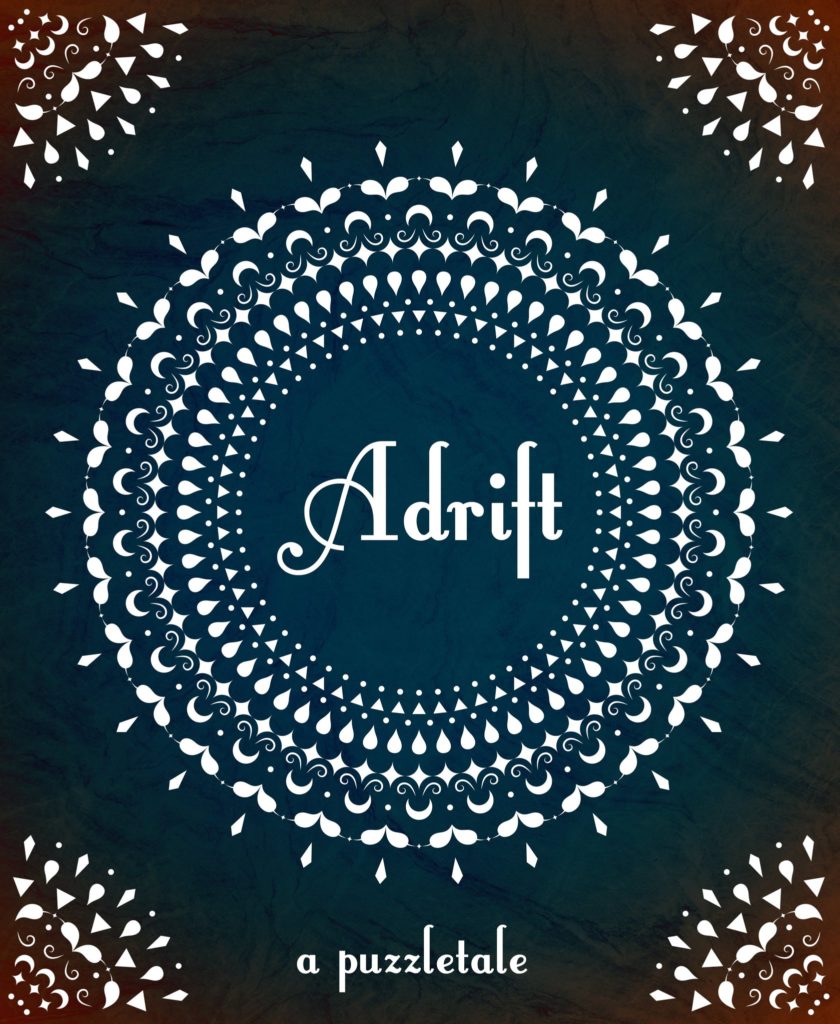
Details
Type of Game: At Home Puzzle Game
Date Played: 2023-01-19
Price: $49
Company: PostCurious
Website: https://getpostcurious.com
Team Size: 1
Colorblind-friendly: No
Outcome: Win


